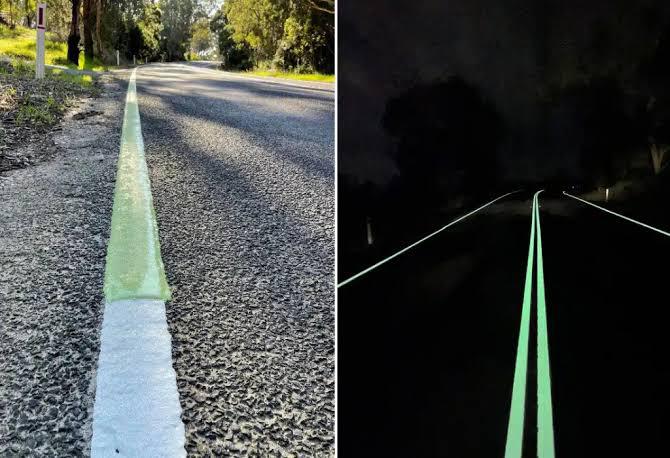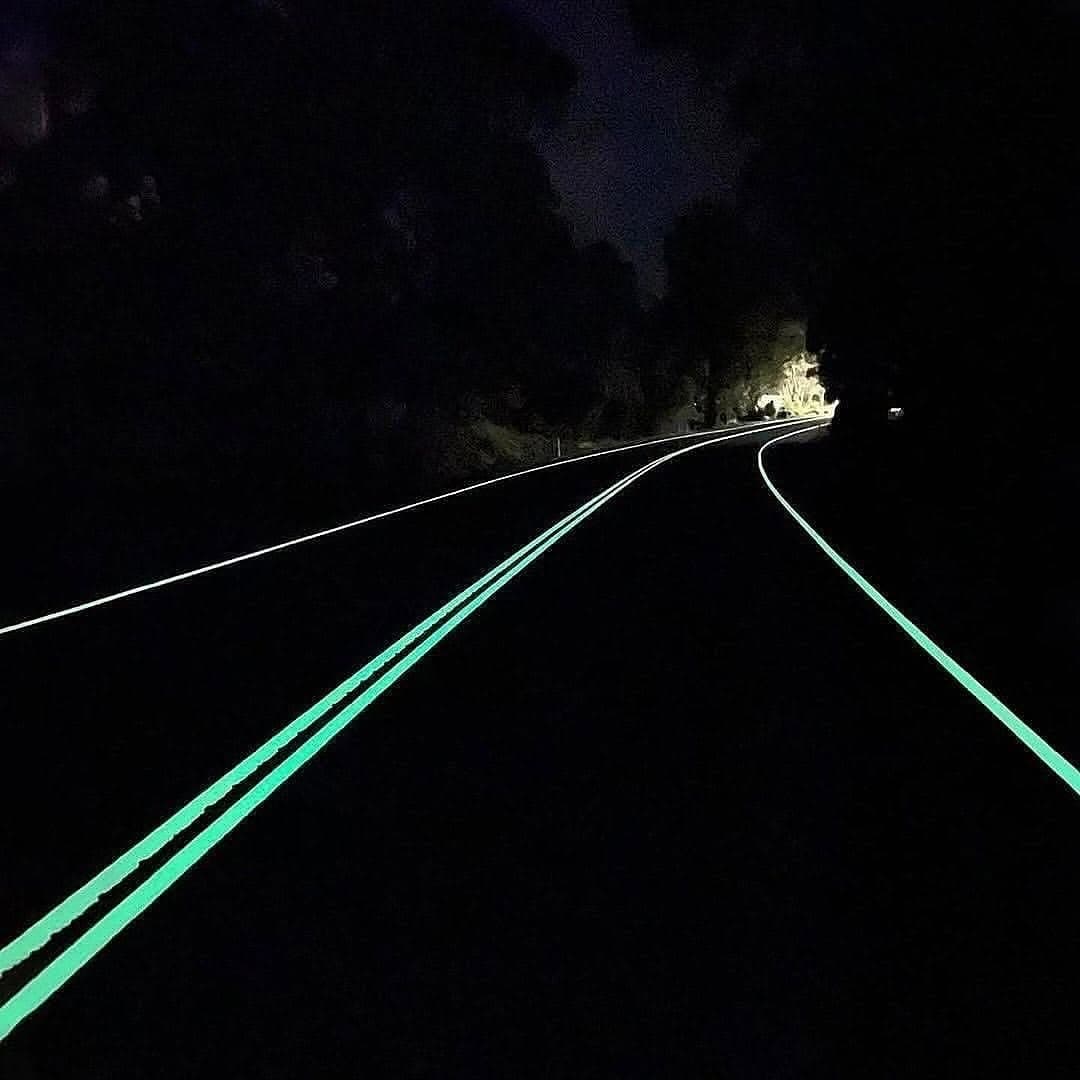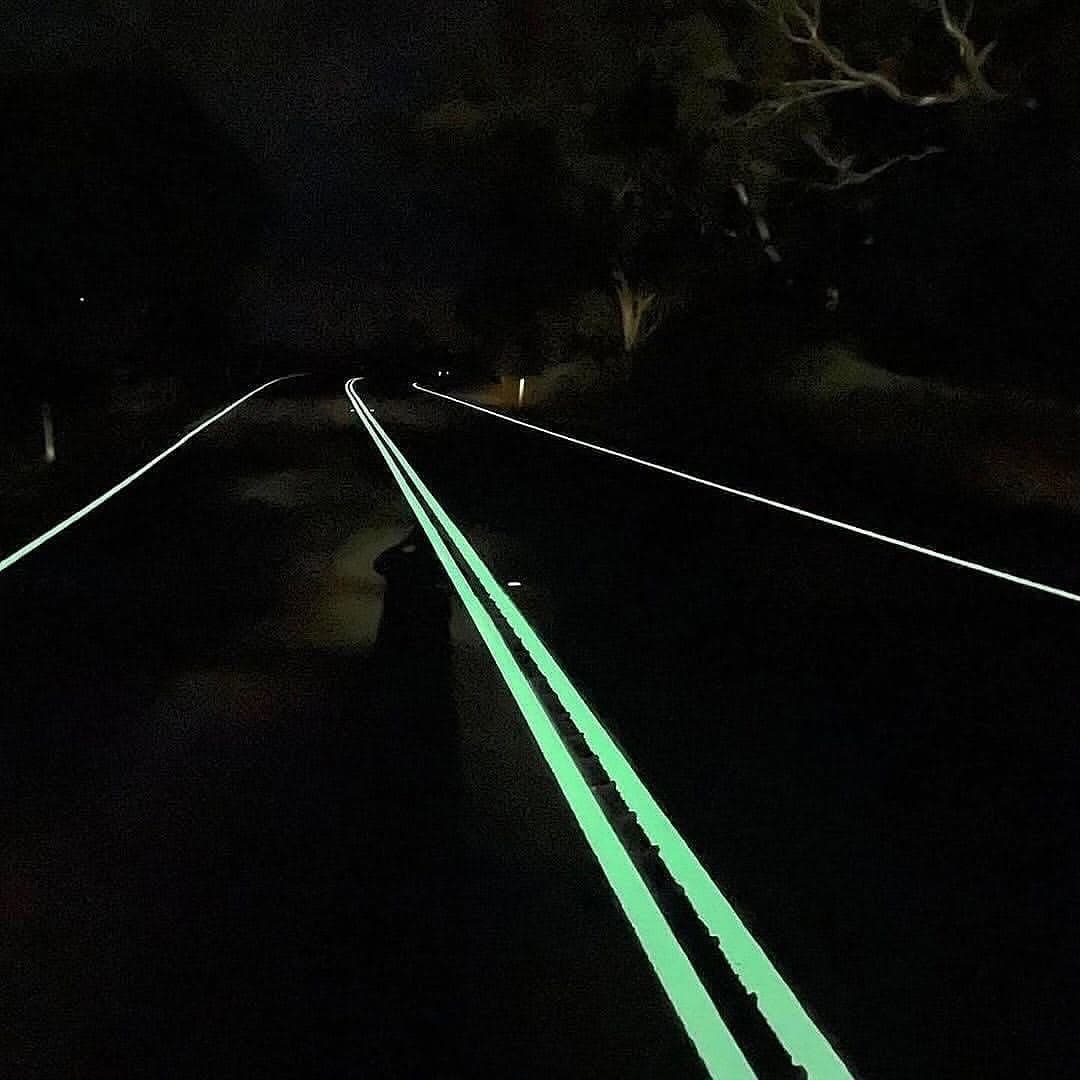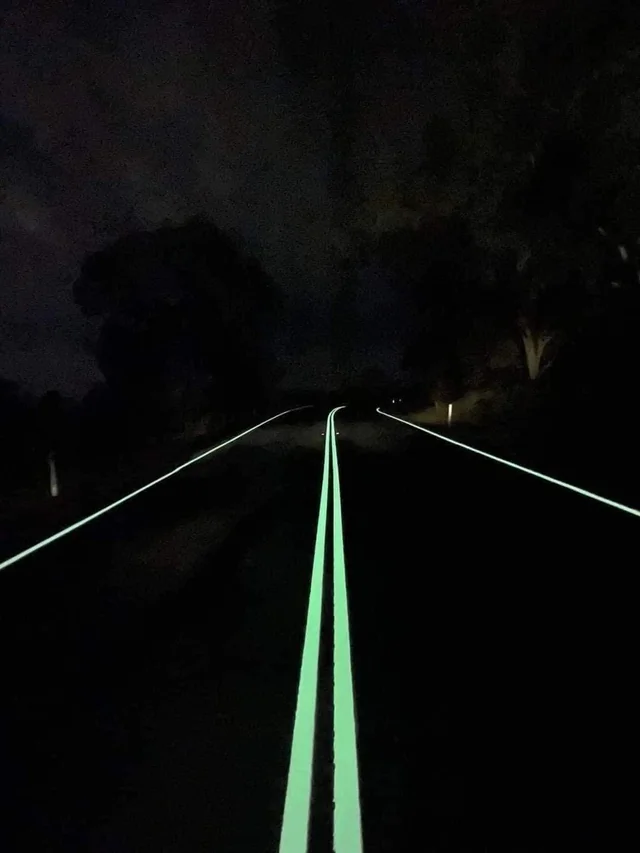Driving at night can be a stressful experience, especially on poorly lit roads. Headlights help, but visibility often remains limited, and for many drivers, the dark stretch of highway ahead can feel like a leap of faith. But in Australia, an innovative solution is being tested—one that’s lighting the way forward in the most unexpected (and visually stunning) way.
Glow-in-the-dark roads.
No, this isn’t a sci-fi film or a video game. It’s real, it’s happening, and it’s catching the attention of the world.
The idea sounds magical, but the science behind it is surprisingly simple. The glow comes from photoluminescent materials—special pigments that absorb sunlight during the day and then emit that stored energy as light after the sun goes down.
These materials are mixed into the road paint used for lines and markings. During daylight hours, the road “charges,” and at night, it softly glows—casting a gentle, neon-like light that can guide drivers without the need for powered street lighting.
This technology is currently being trialed in parts of Victoria, led by the Department of Transport and Planning in collaboration with a company called Tarmac Linemarking. Early images from the trial sites look surreal: smooth stretches of glowing green paths cutting through the night, like a scene from Tron made real.
Beyond the futuristic aesthetic, there’s a serious reason for this innovation—safety. Nighttime driving carries significantly higher risks, with visibility being one of the leading factors in nighttime accidents. Traditional reflective paint has its limits, especially in fog, heavy rain, or remote areas without lighting infrastructure.
Glow-in-the-dark markings are meant to bridge that gap. They’re visible even in complete darkness, and they don’t rely on electricity, making them especially useful in rural areas, environmentally sensitive zones, or places where traditional lighting would be costly or disruptive.
They could also prove incredibly helpful for cyclists and pedestrians, making bike paths and walkways easier to navigate after dark.
One of the most compelling parts of this technology is its environmental benefit. Instead of relying on electricity to light up roads all night, these markings simply absorb the sunlight we already have in abundance. There are no wires, no energy bills, and very little maintenance.
In an era where cities and governments are being pushed to think greener, glow-in-the-dark road markings offer a surprisingly elegant and sustainable solution.
The public response so far has been enthusiastic. Drivers have described the experience as “calming” and “strangely beautiful.” Some even say it makes the drive feel safer, more focused—like the glowing lines are gently guiding them home.
There are, of course, practical questions still being tested: how long the glow lasts through the night, how well it holds up in different weather conditions, and whether it’s durable enough for long-term use. But the early results are promising, and other countries are watching closely.
If the trials continue to succeed, this technology could spread across Australia—and potentially the world—transforming how we light our roads forever.
It’s easy to dismiss these glowing roads as a novelty at first glance, but they represent something deeper. They’re a symbol of how creative thinking can reshape the world around us. Instead of accepting dangerous, dark roads as the norm, someone asked: What if they could glow?
That single question has led to something remarkable—something that’s not only safer and smarter but unexpectedly beautiful.
As drivers cruise through these softly glowing highways, guided by light that came from the very sun above them, they’re not just part of a transportation trial. They’re part of the future.
And the road ahead? It’s looking brighter than ever.








